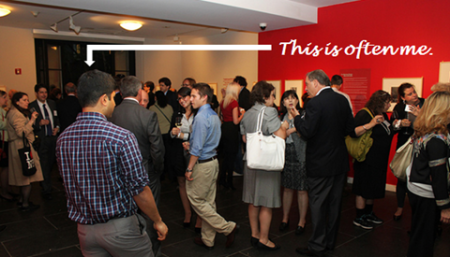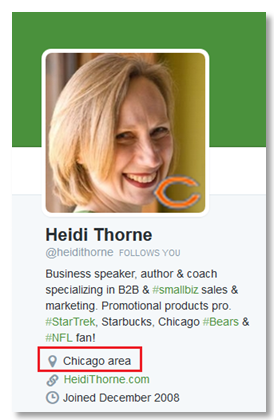
Photo by Eugene Capon from Pexels
I spent most of 2008 organizing virtual event campaigns at a technology media company. I helped define and execute a turnkey virtual event sponsorship product. We licensed a vendor’s technology platform to run virtual events for companies like HP, Oracle and CA Technologies.
Our clients saw virtual events as a new and innovative way to run their lead generation campaigns. A lead who attended a half-day virtual event was more qualified than one who downloaded a white paper.
These clients were ahead of the curve. Maybe a little too far ahead. Because while virtual events were an effective form of outreach back in 2008, they never really took off. Until now.
My Blogging Niche: Virtual Events
During the 2008 financial crisis, I was laid off from that job, but quickly found a new one with the virtual events technology vendor we were using. I re-made myself as a virtual events evangelist and blogger. I established a personal blog and also wrote for my new employer’s blog. All told, I must have published over 300 posts on the topic.
It’s much different today. Just look at what Google Trends says.
Virtual Events Saw Early (But Limited) Adoption
I started my job in early 2009. The financial crisis caused corporate event budgets to be slashed and we expected virtual event adoption to follow a hockey stick curve. Early adopters included B2B media companies and technology companies. We experienced solid growth, but the hockey stick never surfaced.
The other day, I saw “virtual events” in a headline on the New York Times homepage. In 2009, I never could have imagined that happening. Now that virtual events are back in vogue, I’ve been doing some reflecting.
Why was awareness so low in 2009 and why didn’t the adoption come sooner? Here are my thoughts.
What’s in a Name? Everything
I wish we came up with a better name. The dictionary definition of “virtual” refers to something “simulated or extended by computer software,” while I associate the word with “that which is not real.” The “virtual” in “virtual events” makes the category seem mysterious. When something is mysterious, it’s easy to put it aside or pay less attention.
What if we built in some aspiration into the name, like “supercharged experiences,” “dynamically digital” or “measurable moments of delight”? I’m somewhat joking with these particular names, but the sentiment holds. We would have been better served with a name that connected better with people.
Hard to Get a Feel or a Taste Without Attending a Virtual Event
What added to the mysteriousness?
The fact that you couldn’t just “check one out” easily. There were large-scale, highly publicized virtual events. Cisco and SAP were early innovators, hosting virtual events for their Cisco Live and SAPPHIRE conferences.
However, unless you attended one, you didn’t know what the experience was all about. Sure, you could register for free and check it out. But people who were not part of Cisco or SAP’s target audience probably never heard of them.
What we probably needed back then? Open (e.g., no registration) showcase environments, as well as testimonial videos that showed how an attendee experienced a virtual event. I recall seeing some videos, but we needed more. Overall, we, the industry, needed to better market ourselves.
Fear of the Unknown
To experienced event marketers, virtual events were a brand new thing. Remember my issue with the mysteriousness? Some event professionals feared the unknown. I wish I had more empathy for the event planners back then. I’d be the outsider, the rah-rah person cheering “virtual, virtual, virtual!” while they were wondering things like:
Why will these things work?
What’s my role going to be?
What if I’ve never done one before?
We had a lot more success when we shifted our focus from 100% virtual events to “hybrid events,” in which the virtual experience extends the face-to-face event.
The industry discovered that when a physical event had a “virtual extension” (creating a hybrid event), people who attended digitally would purchase a ticket to next year’s physical event. In other words, virtual could be a marketing vehicle for the physical event.
In the midst of the current pandemic, hybrid events aren’t possible. But the lesson was clear. Some perceived virtual events as “disintermediation.” Hybrid events, on the other hand, were a nice compromise.
PCMA, a leading association for event planners, now has a Digital Event Strategist (DES) certification. Many of my peers from the 2009 era have one.
No ‘Crossover’ From Digital Marketers (Until Now)
In 2009, I found myself engaging with executives and event planners at B2B media companies and technology companies. What about the digital marketers responsible for demand generation? There were a few pioneers, like the ones I worked with at my technology media job in 2008. But there were very few.
Meanwhile, from 2009 to the present, look what happened:
- Social platforms emerged (e.g., Facebook, Twitter, Instagram, etc.).
- Companies built branded communities using online community platforms (e.g., Lithium, Jive).
- Webinars became a standard tool in digital marketers’ demand generation toolbox.
- Slack and Microsoft Teams became the new way to communicate and collaborate.
In other words, all marketers got more comfortable with related tools. And in today’s situation where everyone is working from home, virtual events are a natural fit. It may be the only fit. So an entire new market has opened up. Demand generation tends to have the largest budget within marketing teams. Unlike 2009, a decent chunk of this budget will now go to virtual events.
Where Do We Go From Here?
Just as BlueJeans and Zoom built more modern tools atop the market established by Cisco WebEx, GoToMeeting and others, I expect to see innovation in this space, both from existing vendors and new entrants. Similarly, the practitioners of virtual events will dream up new and creative ways to engage audiences.
I look forward to it.
Note: This post was originally published at CMSWire.



 Posted by Dennis Shiao
Posted by Dennis Shiao 

 Start your networking before the networking event.
Start your networking before the networking event. I learned this hack at an event in San Francisco. The event provided free pizza and beer.
I learned this hack at an event in San Francisco. The event provided free pizza and beer. If people are seated and eating at tables, go grab your food, then scan the room for tables with available seats.
If people are seated and eating at tables, go grab your food, then scan the room for tables with available seats. At some networking events, it’s not apparent who the organizer is. At others, the organizer will grab the microphone and welcome everybody.
At some networking events, it’s not apparent who the organizer is. At others, the organizer will grab the microphone and welcome everybody. Is there a long line to get into the event, or for the free pizza? Lines are a great place to network.
Is there a long line to get into the event, or for the free pizza? Lines are a great place to network.


















